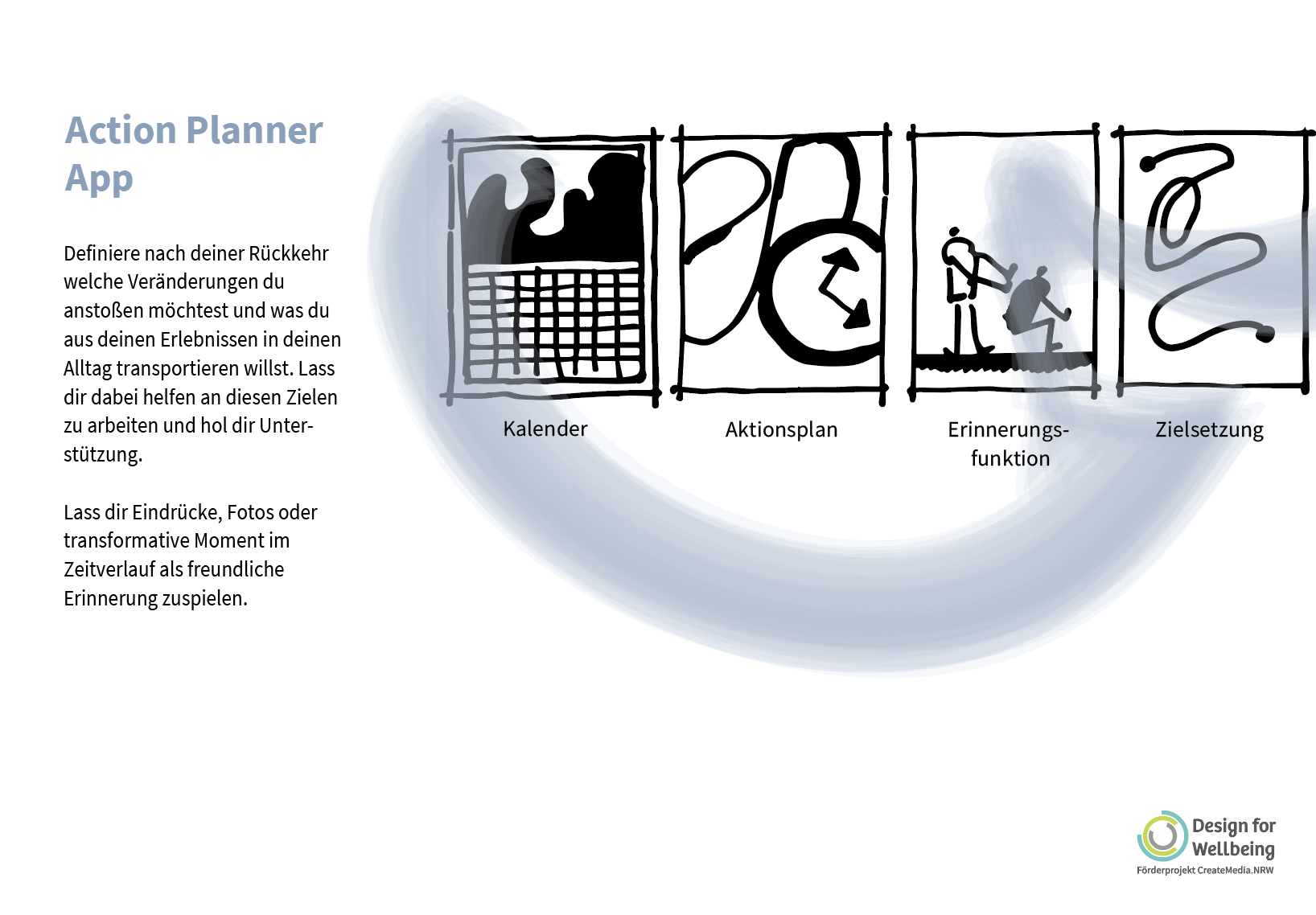Design for wellbeing
Fueling Design innovation through positive psychology
Project: We all strive for wellbeing. For example, people want to feel close to their loved ones or express their skills and capabilities. It is more and more about the positive experience and less about the material possession. “Design for wellbeing” promotes this change, to design it, to make it economically accessible and thus to increase the wellbeing of the end users in sustainable way.
Solution: Design and innovation methods has a limited view of coming up with an innovative solution to identified wicked problems, it neglects the enhancement of positive experience. With the design for wellbeing methodology, we change this perspective and explicitly focus on the positive experience. We start with people who go through the process of wellbeing transformation by performing a specific type of activity and develop insights on how various factors increases the wellbeing of the users and translate these insights into a product or services that enables other users to have a comparable positive experience.
Outcome: As part of the project, an innovative design methodology "Design for Wellbeing" approach was developed. These include the project manual "Reference Guide", the interview tool "Positive Practices Canvas" to better capture the individual components of practices, the "Wellbeing Checker" for the evaluation of ideas and rough concepts and scientific publications. Our intent is to prepare designers as well as various organization to implement this methodology. The developed guidelines offers products and methods for the development of positive experience and innovation. Eventually our goals was to expand the range of services offered by creative industry and thus creating a competitive advantage.
Contribution: I was involved with conducting secondary research, qualitative and qualitative research, insight synthesis, presentation, and in developing the prototypes.
Contributors: The project of “Design for Well-being” was created in collaboration with four partners, the University of Seigen, the Happiness Research Organization, Noto Design and IXDP.
Year: 2018
approach for wellbeing
The study of wellbeing is divided into subjective and objective wellbeing.
wellbeing in social practices
Researchers in the field of positive psychology have determined that subjective wellbeing is influenced by three main factors.
Daily activities can be analyzed by three elements: the meaning behind an activity, the skills required to perform the activity and the material necessary. By understanding the interplay of meaning, skills and materials and their influence on psychological needs, it becomes possible for designers to impact and shape daily practices for the better.
Practice instead of Persona / Focus on the positive
The focus on practice changes the perspective of generative innovation approaches.While many approaches address problem solving, this approach focus on creating something positive and solve “discovered” problems.
Conduct Qualitative interview through positive practice canvas
Learn from the right “Happy Users”
In order to create a positive experience, learning from users for whom a specific practice already has a positive effect on their wellbeing. They form a richer source of information and inspiration.
Connectivity of the interview result
The positive practice canvas developed can be adapted to any topic (shown below).
The method and tools developed enables to first record wellbeing oriented data, then analyze it and finally make it useable for the design and innovation process.
Positive Practice Canvas
Starting point of the the innovation projects are qualitative interviews to investigate the focus activities. The so called “practice canvas” helps the interviewer to talk through the interview step by step, to record the important elements of activities and then to analyze the interview.
Case Study: Transformational Travel
The case study with the Lufthansa Innovation Hub, tries to understand those travelers who travel for the purpose of transformation and to understand the reason for this transformation and to test the design for well being apporach.
Process
Transformation Travel Process
Desk Research and Data Analysis
Start with practices of meaningful travel- at the beginning of the case study, the project team and Lufthansa Innovation Hub explored topic of what meaningful travel can be in the context of wellbeing and suggested to focus on the trend around “transformation travel” for the rest of the project.
Ideation: Concept Development
Based on the information gained from the interview, we designed various concepts which can help users in their transformation journey. With the help of positive practitioners, we evaluated the concepts directions, identified 6 thematic areas of transformation and then we chose to further deep dive into two concepts which were tested at the Dusseldorf Airport.
Topic 1: Transformation Travel app
topic2: Travel Reflection Diary
Prototype at Düsseldorf airport: Analog Reflection Diary













































